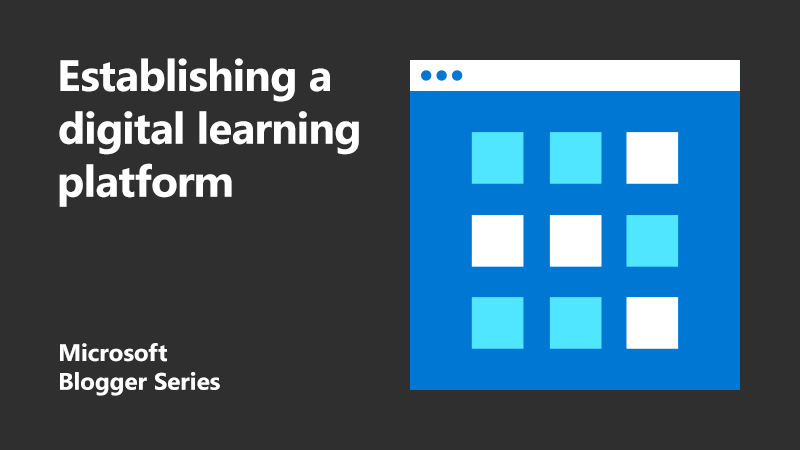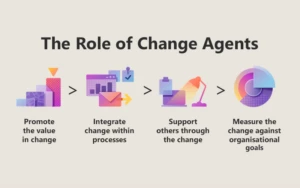
4 tips for establishing a digital learning platform
It’s been an interesting journey of discovery. Just over two years ago, I took on the role of Head of Digital at South Gloucestershire and Stroud College with the main objective of implementing the recently produced digital strategy. The first priority of this strategy was, and I quote…
‘To establish a sector leading digital learning platform that provides for independent, collaborative and interactive user experiences.’
And so it began.
 Tip 1 – Do plenty of research
Tip 1 – Do plenty of research
Once you’ve got a goal, the initial stage should be one of exploration. Research every possibility that might fit your needs.
Our first year was spent visiting other institutions, attending conferences, and talking to various third-party providers about their products. We had no preconceptions of what this new platform would look like, or who would provide it; even Moodle was still on the table at this stage.
But the reality was, our research with students and staff pointed to the fact we needed something new, something that was current, future-proof, and mobile-friendly. Developing skills and professionalism for the workplace was also a key consideration. We just didn’t cover these well enough and the student experience was compromised. Change was required.
Tip 2 – Stay open-minded
At the beginning of our journey, Teams had literally just been released. We’d taken a cursory look, but didn’t feel it had the functionality to provide a suitable platform. We were very much leaning towards one the big Virtual Learning Environment (VLE) providers and had them down to the college a couple of times to present to staff. The feedback was varied, from ‘this is great’ to, ’I didn’t get any of that.’
And then there was the cost. I started to have doubts about the suitability of the VLE platforms for the college. Meanwhile, Teams – and especially Teams for Education – had been developing at breakneck speed.
So, we started looking more closely at Teams. Yes, there were gaps, but Teams was clean, focusing on communication and collaboration. It wasn’t trying to be all things to all people, but was offering the opportunity to use other applications, if required. It was reliable, both in the mobile and desktop world. It was also supported by one of the largest tech firms in the world. We thought we’d take a look and implemented a pilot scheme.
Tip 3 – Trial your solution first
After finding the perfect solution – or even several potential solutions – don’t jump right. Get your IT team involved and trial these platforms. See how each works in a real-world environment, away from glossy presentations and sales pitches.
The college’s Digital Team managed to get our Teams trial in place for September 2018. It was a comprehensive pilot scheme, pulling together representation from 12 departments and included 40 teachers and around 450 students. The majority of these pilots were using only Teams as their Digital Learning Platform, with a couple of classes using a hybrid model of Teams alongside Moodle.
The pilot was incredibly successful. Feedback throughout the pilot from staff and students was overwhelmingly positive, particularly around how this had improved engagement of students and we made the brave decision to move the entire college away from Moodle and into Teams and Office 365 for the 2019-20 academic year.
Tip 4 – Manage change and offer training
Our decision to switch to Teams as a digital learning platform wasn’t taken lightly. The key to such a significant change has been a well thought-out change management strategy that focused on people, and the things they do, rather than the technology that supports them.
We carefully managed the messages that staff received. We put in place an extremely comprehensive training programme that consisted of six hours face-to-face basic training for all curriculum staff. We also offered extended ‘masterclasses’ that staff could access for various Office 365 and other applications.
Teams were centrally managed through Powershell, to give curriculum departments the flexibility to decide how they structure their delivery. This included determining which groups are collated into Teams, and which are separate. Membership of teams is linked directly to our Learning Management System, so encouraging better management of data.
We are about a month or so into the new academic year now and so far, so great!
The learning curve is steep, and it’s not without its challenges. But it’s been very manageable, with great support from Microsoft. Most importantly, our training doesn’t stop now we’ve rolled out Teams. Our Digital Team has been sent to bootcamp, as well as numerous face-to-face training and support visits from Microsoft.
In the latest visit, Microsoft’s Dominic Williamson and Alan Crawford met with staff and students to offer support and review progress. This was hugely successful and motivational for the college. Happily, it also coincides with the announcement that SGS College will become a Microsoft Showcase College 2019.
Find out more
Introduction to Microsoft Teams – the digital hub for educators and students
Staff Teams for effective leadership and saving time
About the author
 Simon has worked in the Further Education sector for 13 years, all of them at SGS College, and very much with a focus on curriculum development. He started lecturing in Business and IT, before moving into cross-college roles, helping teachers develop pedagogy and other aspects of teaching and learning. After two years as Head of Teaching and Learning, he moved into a role focusing on the development of digital learning. In this role, Simon’s transformed the way students and staff use technology in the curriculum, moving them away from a content-driven solution to one based on communication and collaboration. This shift is proving revolutionary, with student and staff engagement vastly improved on all fronts.
Simon has worked in the Further Education sector for 13 years, all of them at SGS College, and very much with a focus on curriculum development. He started lecturing in Business and IT, before moving into cross-college roles, helping teachers develop pedagogy and other aspects of teaching and learning. After two years as Head of Teaching and Learning, he moved into a role focusing on the development of digital learning. In this role, Simon’s transformed the way students and staff use technology in the curriculum, moving them away from a content-driven solution to one based on communication and collaboration. This shift is proving revolutionary, with student and staff engagement vastly improved on all fronts.




